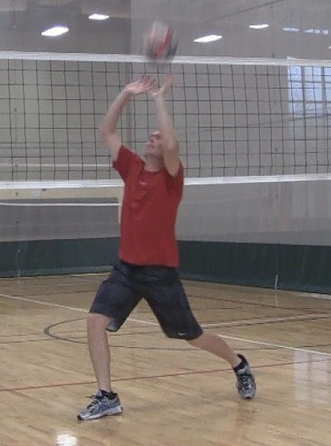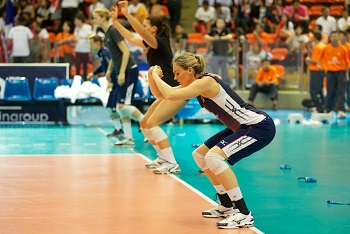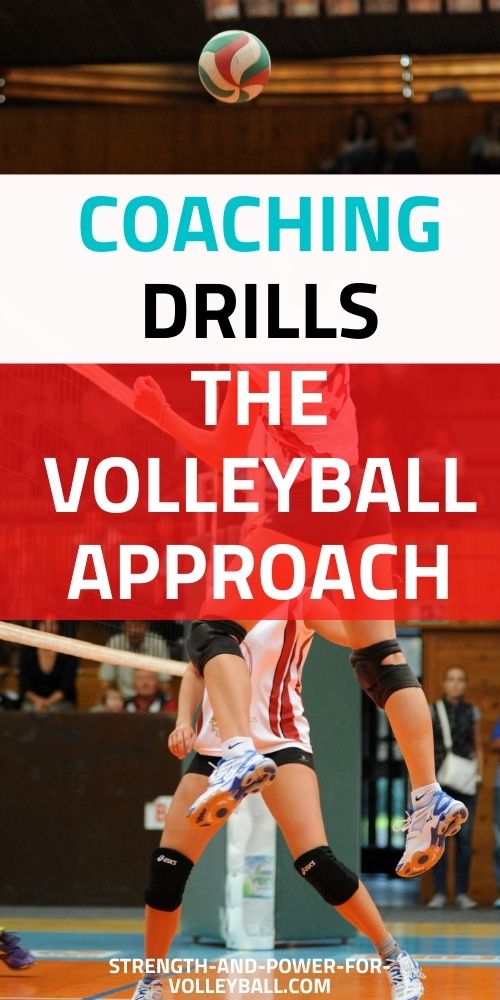Volleyball Footwork Drills
Techniques for Approaching & Setting
Volleyball footwork drills for hitting and setting.
Why Practice Volleyball Footwork?
Footwork is the technique for getting in position to make the play.
For example, in order to effectively spike a volleyball, you need good footwork to help get in position to spike.
The better your footwork, the better you will be at getting in position. Therefore, if you are comfortable moving your feet, it will be easier to get in position and spike.
You want to master footwork patterns.
These patterns are basically your strategies for getting in position to make the play.
Mastering the movement patterns for the volleyball spike approach will prepare you to spike a volleyball.
Spiking Volleyball Footwork
The proper volleyball footwork for approaching to spike is...
Left-right-left for right handed players.
Right-left-right for left handed players.
Why do we teach left-right-left?
The main reason to go left-right-left (for right handed players) is injury prevention. It's more natural for your last two steps of your volleyball approach to be right step then left.
If you finish left-right, your body is not biomechanically efficient when you transition into the jump and spike. The body is contorted and out of position to spike effectively.
Also, when you finish right-left the hips are open to the center of the court.
The hips being open allows the hitter to face the setter and also the area they are going to spike the ball. Being open to the court and facing where the ball is coming from also allows the hitter to be in a position to create more power.
The Volleyball Approach Mat Drills
When first learning to spike a volleyball, focus on the footwork order.
First, focus on taking a big right over a rug then plant the left foot.
Next, bring arms back, and take a big right then left.
Next, do the same approach except now jump up and get the arms in a hitting position.
Also, do the "over the mat" drills approaching from different angles.
The following are "over the mat" slow motion progressions.
1. Take two steps, bring arms back, then land with quiet feet.
2. Now, focus on foot placement.
3. Now, add in a jump.
4. Now, add in a 3rd step. (Left-right-left).
5. Finally, add in the hammer position.
Tips for Spiking a High Outside Set
When practicing the volleyball footwork for approaching to hit a high outside set, be on the left foot when the setter is releasing the ball. After the left step, bring the arms back. Step with the right foot to where the ball is going.
For hitting slides, chase after the ball and jump off the opposite foot (left foot for righties).
Tips for Spiking a Quick Set
1. The hitter watches the flight of the passed ball to the setter.
2. The hitter lines up square to the net.
3. The hitter takes off the ground not next to, but back a little behind the setter.
4. The hitter jumps more straight up and down (don't fly forward).
Setting Footwork

Mastering volleyball footwork patterns for getting in position to set will help prepare you to get in position to set in the game.
You want to go left-right every time you set.
Why go left-right?
You want to always finish on the right foot. Finishing on the right foot will help keep the ball from going over the net.
If you find your sets keep going to tight, turn the right foot more away from the net. This will help you stay more open to the court and keep the ball off the net.
The following are some basic footwork patterns for setting.
To master footwork, have the setter learn to move in different directions before the set.
To set a ball that's passed in front of you...
Take a big step forward with the left foot, followed by a right step as you set.
To set a ball that's passed off the net...
Take a big left step sideways away from the net and then square up to the outside antennae. Set the ball as you shift your weight forward to the right foot.
To set a ball that's passed behind you...
Step back with your left foot, square up to the target and set shifting your weight onto your right foot.
Once you master these movement patterns, you need to work on anticipation.
Practice anticipating the ball being passed (how the ball is coming off your teammates arms). Also, it's helpful to practice reading the server. For example, if you can read the serve is going short, you can anticipate your teammates passing the short serve.
Passing the short serve often results in a lower or tighter pass to the net.
Deep serves are often passed further off the net. Learn your teammates capabilities and improve your ability to anticipate them.
The better you are at anticipating the pass, the easier it will be to get in position to set.
Volleyball footwork, anticipation, and quickness are the key skills for getting in position to set.
If you enjoyed these tips and would like to keep it close to you at any time, just save this pin to your Pinterest Volleyball Training Board.
Volleyball › Volleyball Drills › Volleyball Footwork Drills

